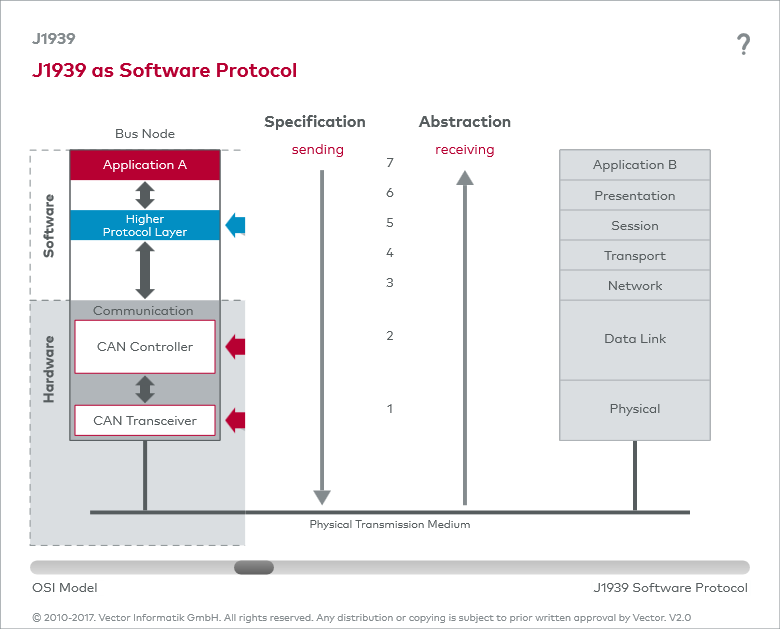- Overview
- 1. Introduction
-
2. General Description of the Protocol
- 3. Document Structure
-
4. Fundamentals
- 4.1. Names and Addresses
- Device Names
- Device Address
- 4.2. Parameter Group
- General
- Structure and Type of a Parameter Group
- Example of a Global Parameter Group
- Example of a Specific Parameter Group
- Parameter Groups reserved specially for the Protocol
- 4.3. Data Management
- Suspect Parameter Number (SPN)
- SLOT Definition
-
5. Network Management
- Network Access
- 5.1. Address Conflict
- Solution and Configurations
- Handling in a Dynamic Network
- 6. Transport Protocols (Multi-packet Messages)
- 7. Diagnostics
General Description of the Protocol
Layers
The J1939 protocol is a higher-layer communication protocol. The layers we are talking about must be clarified to start. The ISO has developed a description model that describes the communication of identical as well as different technical systems on seven abstraction layers. The physical layer is the lowest layer and the application itself is the highest layer. The CAN protocol covers the bottom two layers, which are implemented completely as hardware, in the CAN controller and the transceiver.
Software Protocol
The J1939 protocol uses the CAN layers but places a set of rules implemented as software “on top”. Thus, if a CAN bus node consists of a transceiver, a CAN controller, and the host computer, a J1939 bus node has the addition of a protocol implemented as software which is executed by the host computer.

